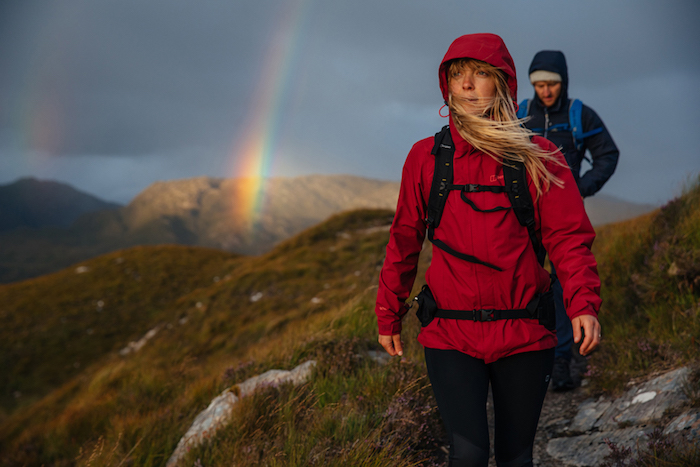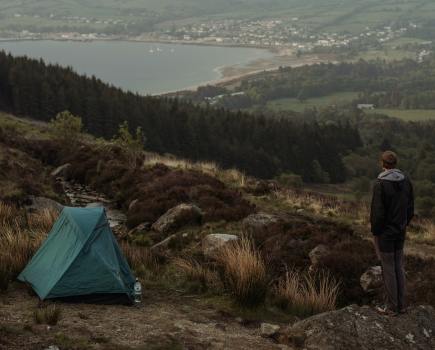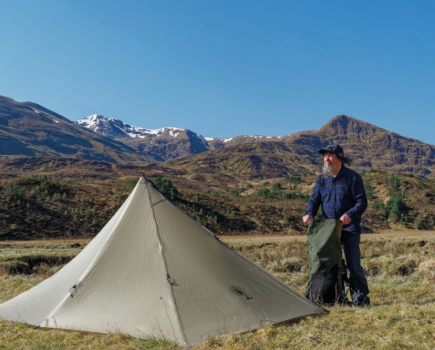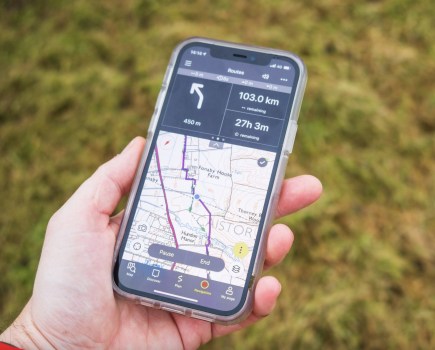With the rough weather of autumn and winter upon us, Judy Armstrong puts six of the best women’s waterproof jackets through their paces…
Image credit: Berghaus
Shorter days and unpredictable weather make a waterproof jacket an inevitable companion. You might wear it all day; if you’re lucky it remains in your rucksack just in case. Either way, the best women’s waterproof jackets will move moisture vapour from the inside, and resist moisture ingress from the outside.
The gold standard of breathable, waterproof fabric is three-layer (3L), alongside unique systems such as Páramo’s Nikwax Analogy. Gore-Tex initially cornered the market in 3L but many brands now offer their own versions. Figures for waterproofing (hydrostatic head, given in mm) and breathability (cited as RET or g/m2/24 hours) give a clue, but features like mechanical venting and cut can make a big difference. I’ve given the lab stats for each fabric. Nikwax Analogy is in its own bracket, actively moving moisture away from the wearer rather than creating a barrier with a membrane. Páramo doesn’t give comparable figures but all its waterproof garments must pass testing at the Leeds University Rain Room.
In general, denser fabrics are stiffer and noisier, and feel more protective against wind-driven rain. But they’re less versatile in moderate conditions, needing more venting than lightweight fabrics. Happily, current 3L fabrics offer reliable weather protection without a heavy weight penalty.
In terms of features, the main issues are cut, length, hoods and pockets. Some brands allow more bust room, others are baggy around the whole torso, some are narrow at hips and waist. Hoods remain a minefield, with one-point adjustment often compromising fit. Pockets, more often than before, are placed to accommodate rucksack hipbelts – and brands now appear less fearful of our bosoms, adding chest pockets, which are always useful.
Let’s stay dry, ladies, it could be wild out there.
Features
1. Fabric
New-generation 3-layer fabrics should relegate everything else to the background. They are lightweight, breathable, supple and available in many weights. Many brands now have their own 3L, with Gore-Tex and Pertex Shield as the most recognised branded systems. The only reasons to use 2.5-layer (the best known is Paclite) are lower weight and price, because the movement of moisture vapour (breathability) is significantly less. A popular, extremely efficient, but relatively heavy alternative to the conventional 3L system is Nikwax Analogy Waterproof.
2. Hood
You need good shaping, useful peak, neat adjustment (sides and volume), no dangling cords to flick in the wind, movement with the head and peripheral vision. If you are unlikely to use a helmet in your outdoor adventures, avoid hoods with huge volume as they are difficult and/or uncomfortable to cinch down over a bare bonce. I often use a baseball cap in summer, or a beanie in winter to mitigate poor hood shape or a drooping peak. Many hoods boast ‘one point adjustment’ but this isn’t necessarily a good thing, as it’s much harder to adjust the vertical, around the face, from a rear cinch point.
3. Seam taping
It doesn’t matter how much moisture the fabric moves; seam taping is 100% non-breathable. Check inside the jacket: you want narrow tape, and not much of it. Complex panels, especially around the arms and shoulders, require more taping, which means more condensation.
4. Pockets
Pockets should be accessible when you’re wearing a rucksack. Some brands avoid chest pockets on women’s jackets as they think our boobs take up the space. In fact, these pockets are easy to access and ideal for small stuff (compass, GPS, snacks, tissues…). Look for side pockets placed above a rucksack hipbelt, ideally angled so you can comfortably rest your hands in there.
5. Zips
Laminated zips are not waterproof. They are water-resistant, and need stormflap backing. They are a normal coil zip with a PU-coated strip on the outside of each half, so when the zip is done up a tiny gap remains between them. The action of the slider moving over the PU tape is abrasive so reduced water-resistance is inevitable over time. Non-laminated zips generally require more protection as water ingress is possible across the full width including the coil.
6 of the best women’s waterproof jackets reviewed
Best Buy: Jack Wolfskin Exolight Pro Jacket W (RRP £350)
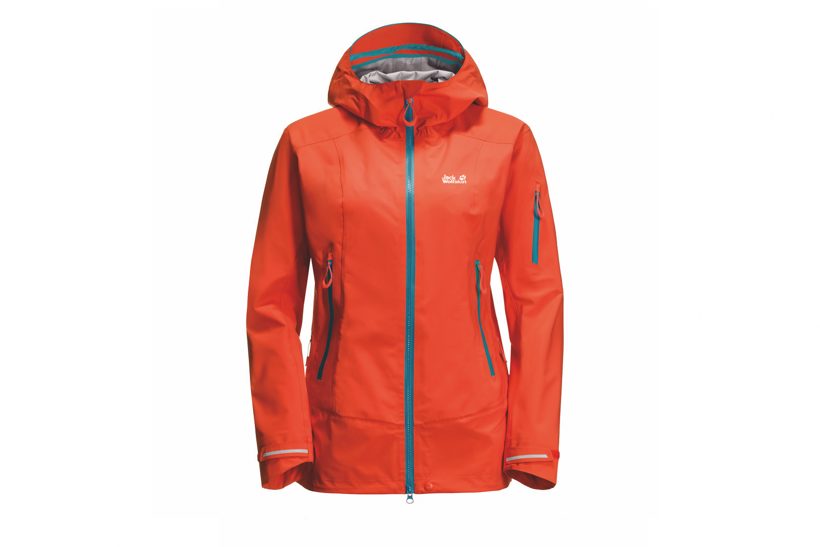
Rating: 5/5
Likes: hoods, pockets
Dislikes: length
Weight: 484g (M) | Fabric: 3L Texapore O2+ Hyproof Stretch Super DWR | Sizes: XS-XL (men S-XXL) | Performance stats: 30,000 / 15,000 | Back length: 67cm
Jack Wolfskin has teamed up with ASI (Alpinschule Innsbruck) alpine guides on this jacket. It ticks every box for me except length – it’s a bit shorter than others so overtrousers are needed sooner.
Read more: Jack Wolfskin Exolight Pro Jacket W review
RECOMMENDED: Berghaus Parvati Shell Jacket (RRP £250)
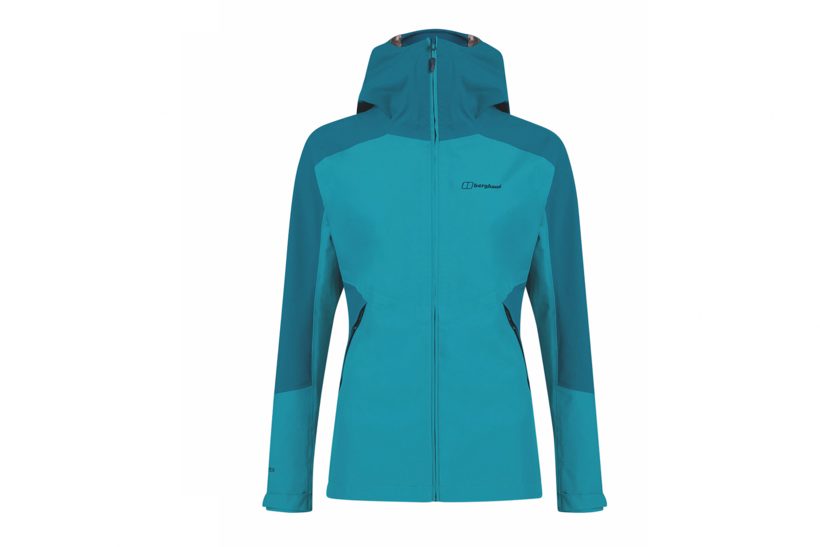
Rating: 4/5
Likes: pockets, length, price
Dislikes: one-way zip, minimal bust allowance
Weight: 534g (12) | Fabric: 3L Gore-Tex (165g/m2), 3L Gore-Tex (188g/m2) | Sizes: 8-20 (men XS-XXXL Athunder Jacket) | Performance stats: 28,000 / 15,000 | Back length: 72cm | New: Autumn/Winter 2019
First impression of the Parvati is of fabric stiffness, which makes it durable but also slightly noisy to wear. Lightweight 3L Gore-Tex is blocked with a heavier version on the sleeves, shoulders, hood/collar and sides (darker colour in the picture). The cut is quite straight, without much chest room; it almost verges on the shape of a men’s jacket.
Read more: Berghaus Parvati Shell Jacket review
RECOMMENDED: Paramo Women’s Ventura Jacket (RRP £375)
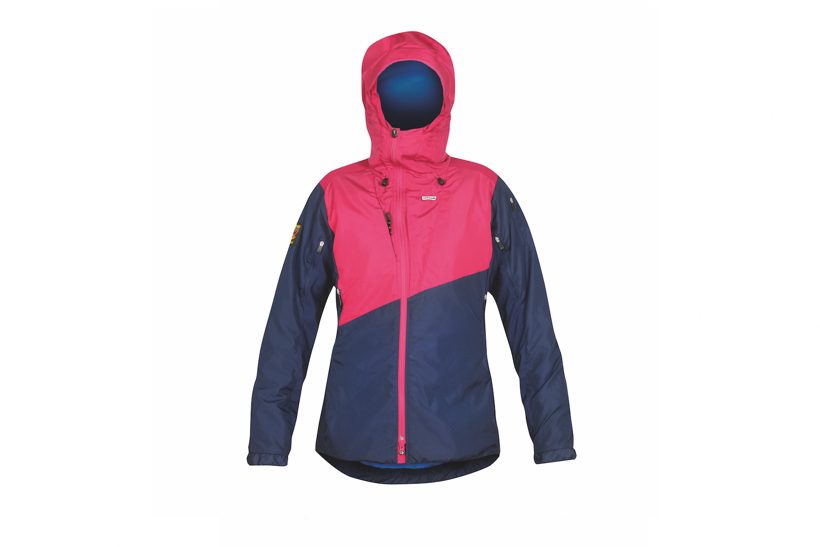
Rating: 4.5/5
Likes: fabric cut, length, pockets
Dislikes: hood volume adjustment, weight
Weight: 808g (M) | Fabric: Nikwax Analogy Waterproof | Sizes: XXS-XL (men S-XXL, Enduro Jacket, £400) | Performance stats: not applicable (Pump Liner, not membrane) | Back length: 78cm | New: 2014
If I’m heading for a long, wet day in the hills, I grab a Páramo jacket. It is simply the most reliable way to stay dry, with Nikwax Analogy dealing with both rain and perspiration. But if I’m carrying a waterproof in case it rains, I take a 3-layer because Páramo jackets are significantly heavier and bulkier in a rucksack.
Read more: Paramo Women’s Ventura Jacket review
RECOMMENDED: Outdoor Research Women’s Micro Gravity Jacket (RRP £250)
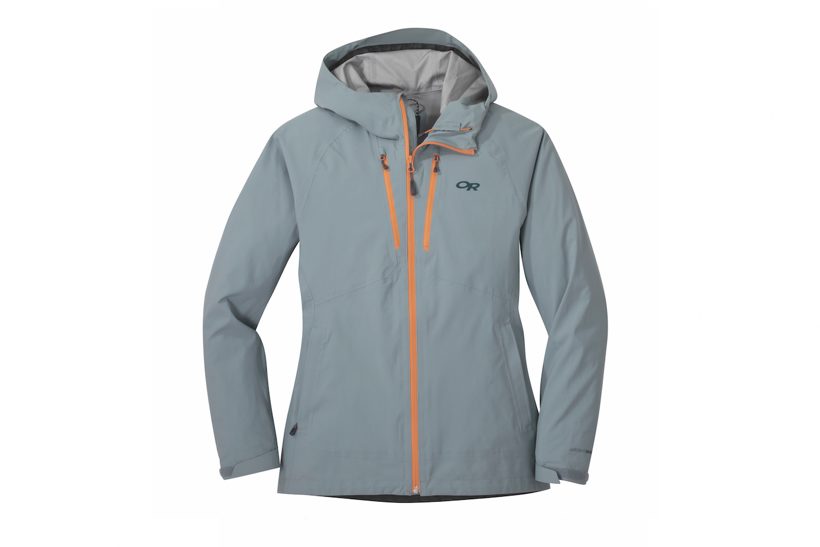
Rating: 4/5
Likes: fabric (supple, quiet, light, breathable), pockets, hood
Dislikes: DWR, internal hood adjustment
Weight: 350g (M) | Fabric: Ascentshell 3L nylon 20D x 45D mechanical stretch ripstop, polyester 30D knit backer | Sizes: XS-XL (men S-XXL) | Performance stats: 15,000 / 30,000 | Back length: 71cm | New: Spring 2020
This lovely, lightweight jacket features OR’s own AscentShell: 3L fabric made from an electrospun membrane. On a basic level, it was described to me as like throwing very small spaghetti at a wall, building up into a waterproof, highly breathable layer. Certainly the hydrostatic head figures are lower than some 3L (15,000mm compared with Fjällräven’s Eco-Shell 30,000mm) but air permeability is exceptional. As a major plus, the fabric is also lightweight, supple and quiet.
Read more: Outdoor Research Women’s Micro Gravity Jacket review
RECOMMENDED: Marmot Women’s Keele Peak Jacket (RRP £320)
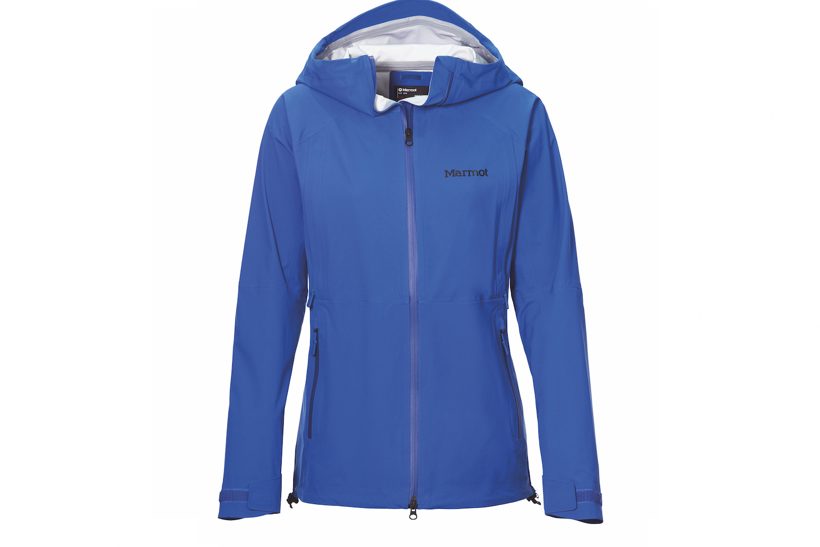
Rating: 4/5
Likes: vents, weight, fabric
Dislikes: side pocket placement
Weight: 343g (M) | Fabric: 3L Pertex Shield Pro | Sizes: XS-XL (men S-XXL) | Performance stats: 20,000 / 20,000 | Back length: 70cm | New: Spring 2020
The lightest jacket in the test by a whisker (6g lighter than Outdoor Research’s jacket despite feeling slightly denser), this uses 3L Pertex Shield Pro, a lightweight, supple, soft fabric. It is highly breathable, with a microporous membrane that allows water vapour to pass through more freely than with regular Pertex Shield.
Read more: Marmot Women’s Keele Peak Jacket review
RECOMMENDED: Fjällräven Keb Eco-Shell Jacket W (RRP £450)
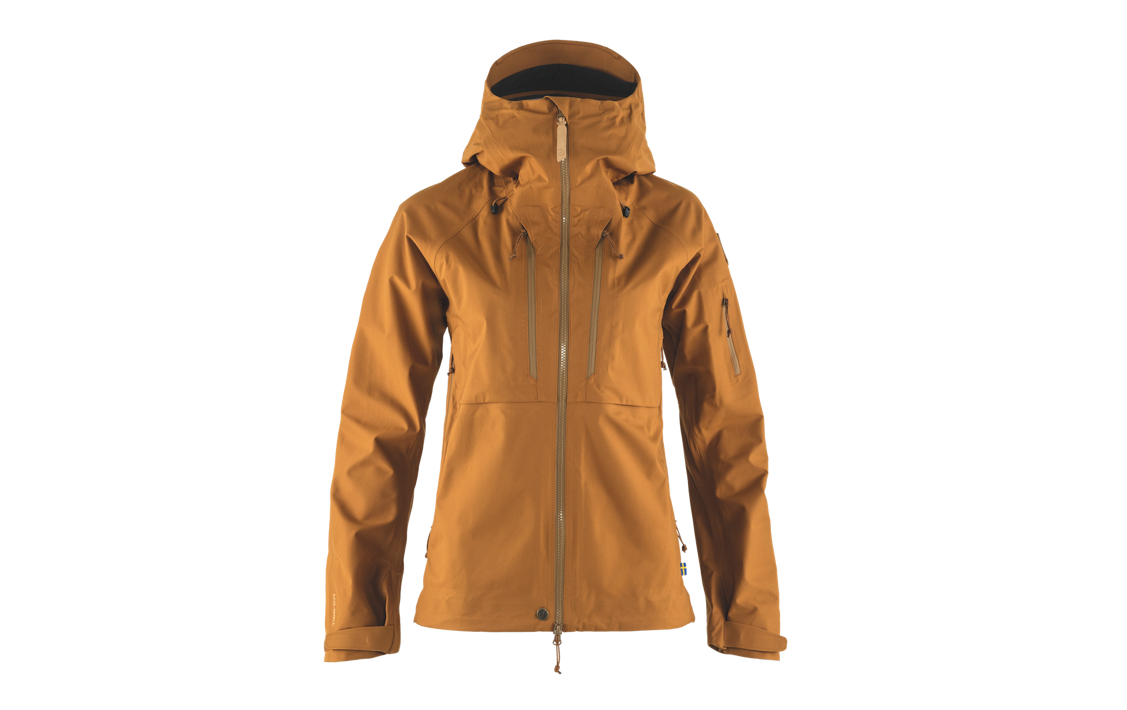
Rating: 5/5
Likes: fabric, vents, hood
Dislikes: no hand pockets
Weight: 485g (M) | Fabric: 3L Eco-Shell | Sizes: XXS-XXL (men XS-XXXL) | Performance stats: 30,000 / 26,000 | Back length: 73cm | New: Spring 2015
Keb Eco-Shell successfully balances those two vital elements: weight and protection. Eco-Shell, Fjällräven’s own 3L, has an impressive specification (30,000mm hydrostatic head, 26,000 breathability). It feels durable and inspires confidence in foul weather, yet weighs less than 500g (Medium).
Read more: Fjällräven Keb Eco-Shell Jacket W review
Subscribe to The Great Outdoors
The Great Outdoors is the UK’s original hiking magazine. We have been inspiring people to explore wild places for more than 40 years.
Through compelling writing, beautifully illustrated stories and eye-catching content, we seek to convey the joy of adventure, the thrill of mountainous and wild environments, and the wonder of the natural world.
Want to read more from us?
- Get three issues of the magazine for £9.99, saving 30% with free UK home delivery.
- Take out a full subscription at just £15 for your first six issues.
- Order the latest issue and get it delivered straight to your door for no extra cost.
- Catch up on content you may have missed by buying individual back issues with free postage and packaging

